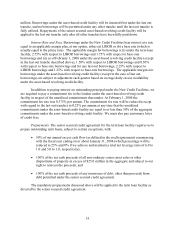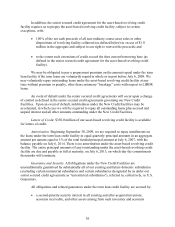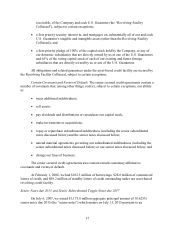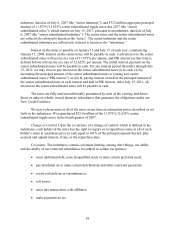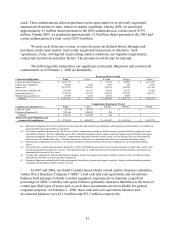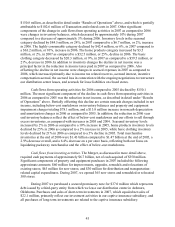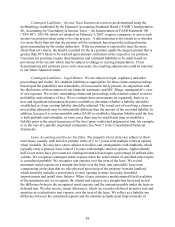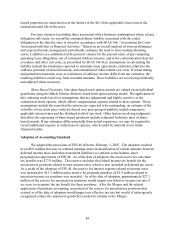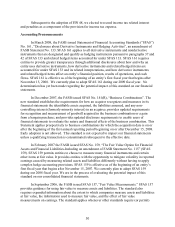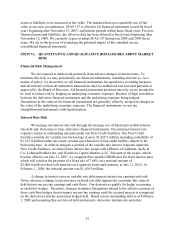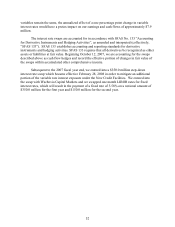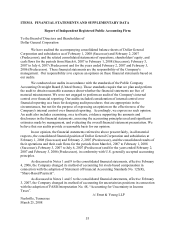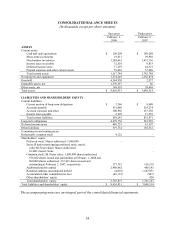Dollar General 2007 Annual Report Download - page 47
Download and view the complete annual report
Please find page 47 of the 2007 Dollar General annual report below. You can navigate through the pages in the report by either clicking on the pages listed below, or by using the keyword search tool below to find specific information within the annual report.45
million to reduce our outstanding capital lease and financing obligations. These uses of cash
were partially offset by proceeds from the exercise of stock options during 2006 of $19.9
million.
During 2005, we repurchased approximately 15.0 million shares of our common stock at
a total cost of $297.6 million, paid cash dividends of $56.2 million, or $0.175 per share, on our
outstanding common stock, and expended $14.3 million to reduce our outstanding capital lease
and financing obligations. Also in 2005, we received proceeds of $14.5 million from the issuance
of a tax increment financing in conjunction with the construction of our new distribution center
in Indiana and proceeds from the exercise of stock options of $29.4 million.
The borrowings and repayments under the revolving credit agreements in 2007, 2006 and
2005 were primarily a result of activity associated with periodic cash needs.
Critical Accounting Policies and Estimates
The preparation of financial statements in accordance with GAAP requires management
to make estimates and assumptions that affect reported amounts and related disclosures. In
addition to the estimates presented below, there are other items within our financial statements
that require estimation, but are not deemed critical as defined below. We believe these estimates
are reasonable and appropriate. However, if actual experience differs from the assumptions and
other considerations used, the resulting changes could have a material effect on the financial
statements taken as a whole.
Management believes the following policies and estimates are critical because they
involve significant judgments, assumptions, and estimates. Management has discussed the
development and selection of the critical accounting estimates with the Audit Committee of our
Board of Directors, and the Audit Committee has reviewed the disclosures presented below
relating to those policies and estimates.
Merchandise Inventories. Merchandise inventories are stated at the lower of cost or
market with cost determined using the retail last-in, first-out (“LIFO”) method. Under our retail
inventory method (“RIM”), the calculation of gross profit and the resulting valuation of
inventories at cost are computed by applying a calculated cost-to-retail inventory ratio to the
retail value of sales. The RIM is an averaging method that has been widely used in the retail
industry due to its practicality. Also, it is recognized that the use of the RIM will result in valuing
inventories at the lower of cost or market (“LCM”) if markdowns are currently taken as a
reduction of the retail value of inventories.
Inherent in the RIM calculation are certain significant management judgments and
estimates including, among others, initial markups, markdowns, and shrinkage, which
significantly impact the gross profit calculation as well as the ending inventory valuation at cost.
These significant estimates, coupled with the fact that the RIM is an averaging process, can,
under certain circumstances, produce distorted cost figures. Factors that can lead to distortion in
the calculation of the inventory balance include:


